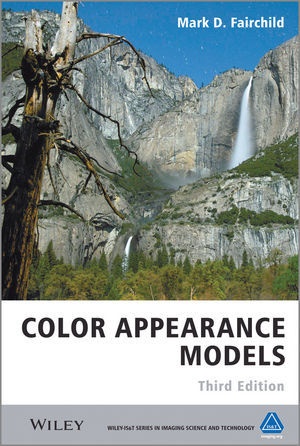Mehr lesen
Informationen zum Autor Mark D. Fairchild, Rochester Institute of Technology, USA Dr. Fairchild is Professor of Color Science and Imaging Science at RIT. He is an Associate Dean for Research & Graduate Education of RIT's College of Science, facilitating the growth and strengthening of the college's research activities and graduate programs. Until recently, he had been the Director of the Munsell Color Science Laboratory for the past 12 years. Klappentext The essential resource for readers needing to understand visual perception and for those trying to produce, reproduce and measure color appearance in various applications such as imaging, entertainment, materials, design, architecture and lighting.This book builds upon the success of previous editions, and will continue to serve the needs of those professionals working in the field to solve practical problems or looking for background for on-going research projects. It would also act as a good course text for senior undergraduates and postgraduates studying color science.The 3rd Edition of Color Appearance Models contains numerous new and expanded sections providing an updated review of color appearance and includes many of the most widely used models to date, ensuring its continued success as the comprehensive resource on color appearance models.Key features:* Presents the fundamental concepts and phenomena of color appearance (what objects look like in typical viewing situations) and practical techniques to measure, model and predict those appearances.* Includes the clear explanation of fundamental concepts that makes the implementation of mathematical models very easy to understand.* Explains many different types of models, and offers a clear context for the models, their use, and future directions in the field. Zusammenfassung The essential resource for readers needing to understand visual perception and for those trying to produce, reproduce and measure color appearance in various applications such as imaging, entertainment, materials, design, architecture and lighting.This book builds upon the success of previous editions, and will continue to serve the needs of those professionals working in the field to solve practical problems or looking for background for on-going research projects. It would also act as a good course text for senior undergraduates and postgraduates studying color science.The 3rd Edition of Color Appearance Models contains numerous new and expanded sections providing an updated review of color appearance and includes many of the most widely used models to date, ensuring its continued success as the comprehensive resource on color appearance models.Key features:* Presents the fundamental concepts and phenomena of color appearance (what objects look like in typical viewing situations) and practical techniques to measure, model and predict those appearances.* Includes the clear explanation of fundamental concepts that makes the implementation of mathematical models very easy to understand.* Explains many different types of models, and offers a clear context for the models, their use, and future directions in the field. Inhaltsverzeichnis Series Preface xiii Preface xv Acknowledgments xviii Introduction xix 1 Human Color Vision 1 1.1 Optics of the Eye 2 1.2 The Retina 7 1.3 Visual Signal Processing 14 1.4 Mechanisms of Color Vision 19 1.5 Spatial and Temporal Properties of Color Vision 27 1.6 Color Vision Deficiencies 32 1.7 Key Features for Color Appearance Modeling 36 2 Psychophysics 38 2.1 Psychophysics Defined 39 2.2 Historical Context 40 2.3 Hierarchy of Scales 43 2.4 Threshold Techniques 45 2.5 Matching Techniques 49 2.6 One-Dimensional Scaling 50 2.7 Multidimensional Scaling 52 2.8 Design of Psychophysical Experiments 54 2.9 Importan...

